
Brad Todd
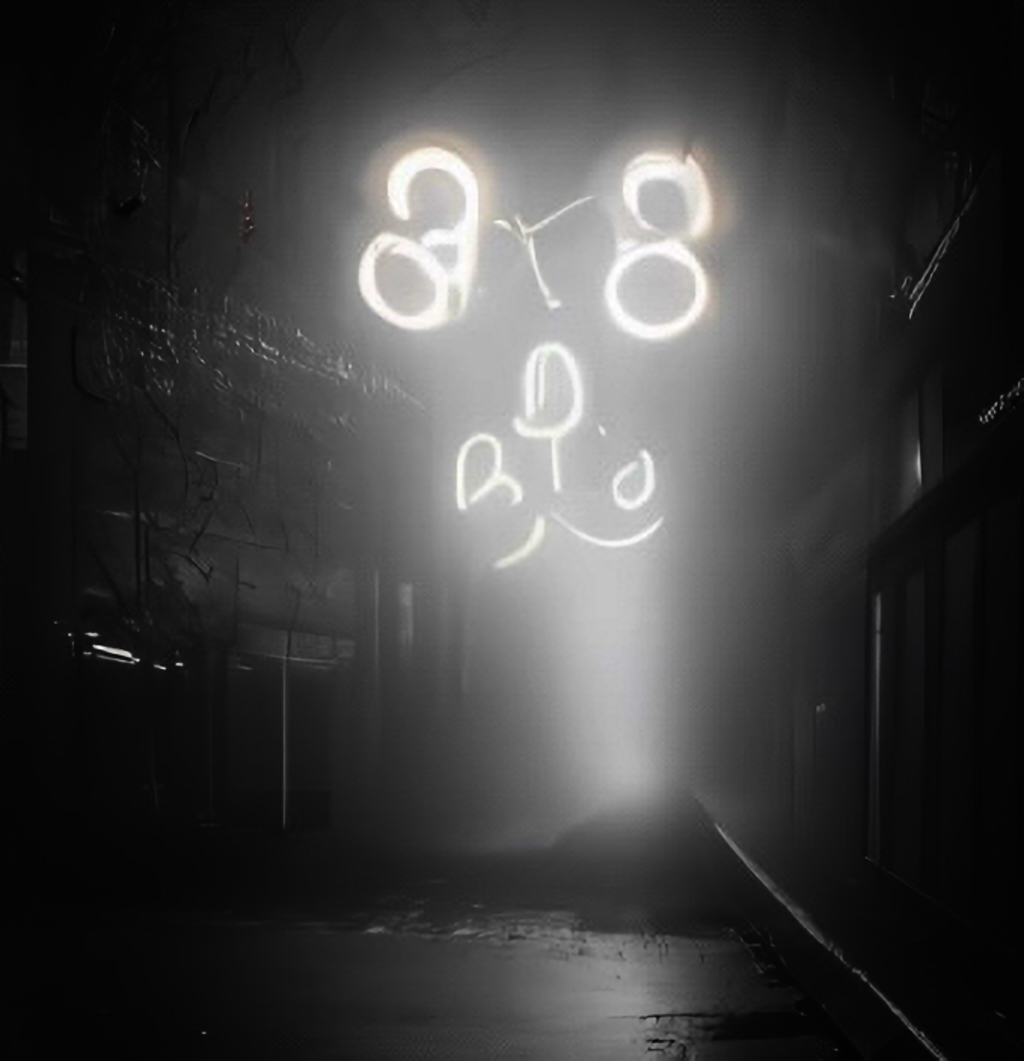
Genesis is a series of 65 (5" x 5" / 12.7 x 12.7cm) images mounted on aluminum behind glass that originate from the first generation of online AI image generators in 2021/22 - images that speak to the technical origins of their becoming, framed and situated in a time scale with its own unique aesthetic manifestations...
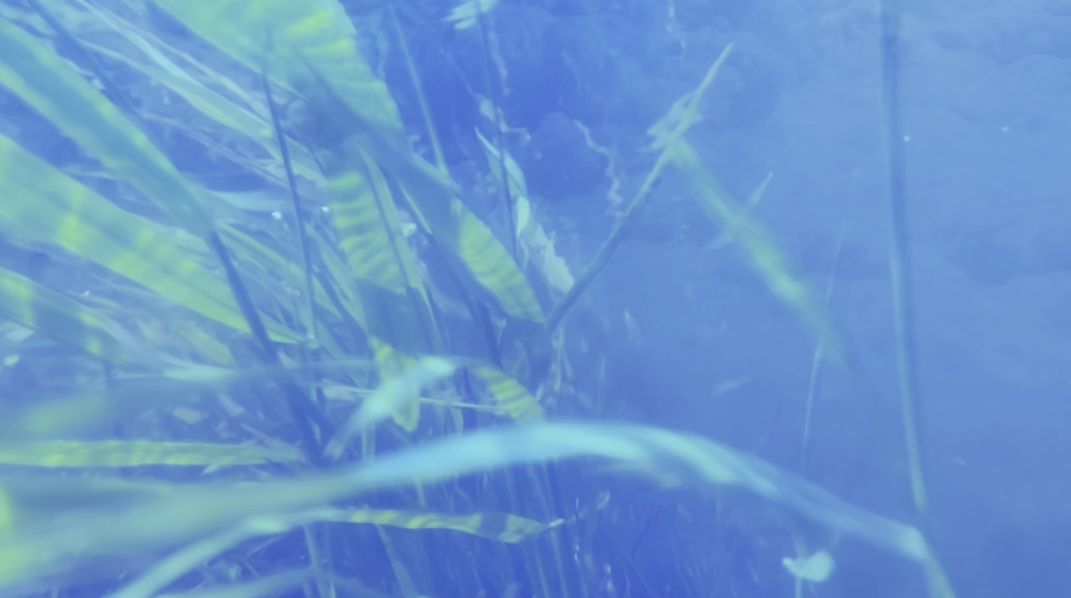
This is a video I made for the Besnard Lakes off of their 2025 album "The Besnard Lakes are the Ghost Nation"
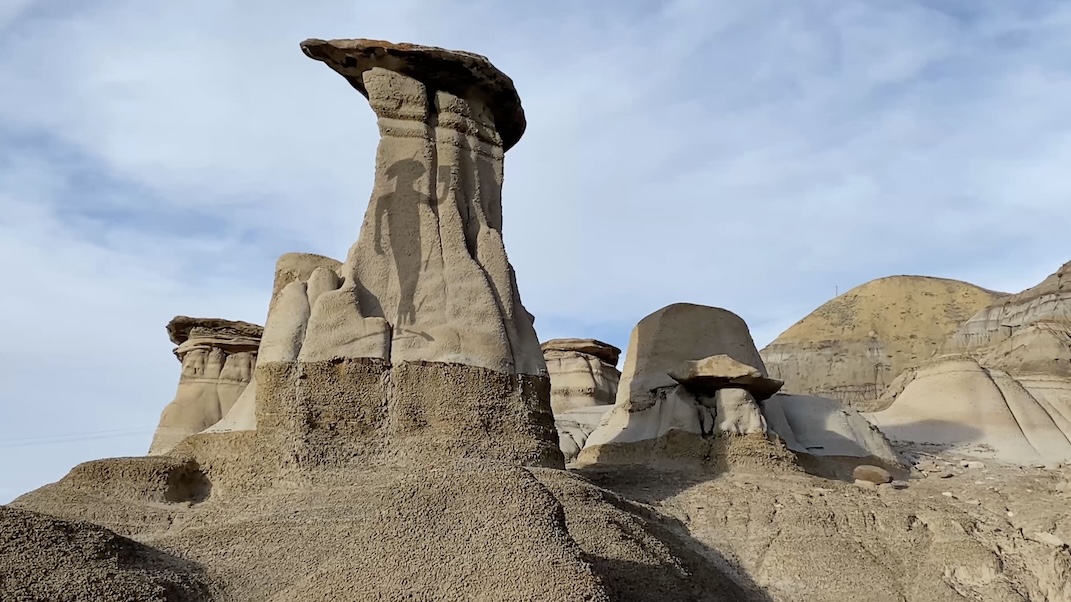
Badlands is a speculative, linear, single channel 4K video that speaks to anxieties surrounding the climate crisis, extinction, deep time, AI and extractivist capitalism.
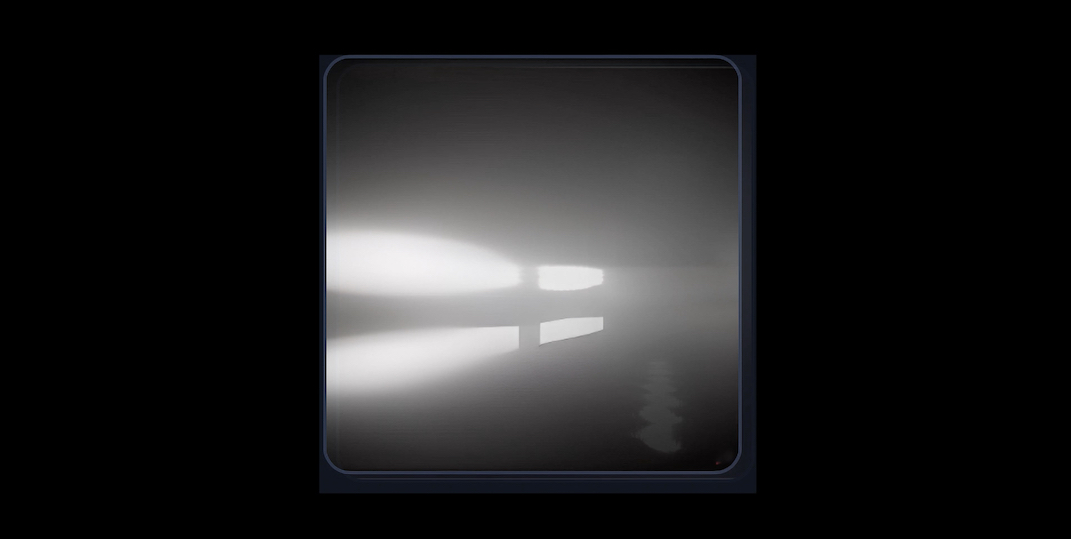
This linear, single-channel video work is composed of images of light which I have curated from several months of intermittent explorations using an online AI image generator.

The installation is composed of two microscopes watching and recording each other and a three screen projection which visualizes the process of interpretive analysis occurring within the software.
This VR and Desktop app focusses on the Allen Psychiatric Institute in Tiohtià:ke/Montréal.
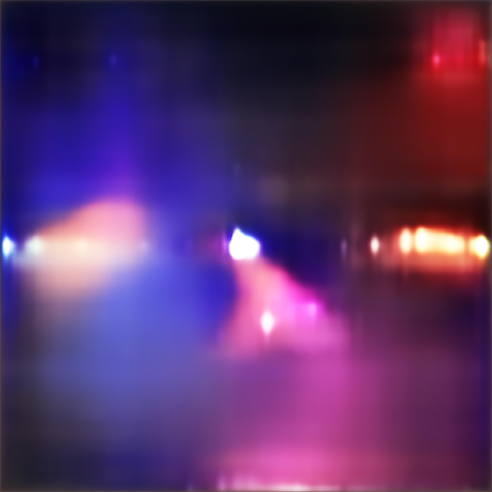
3050 K is an AI/Neural Net visualization project which utilizes imagery of stage lighting (floods, spots, footlights, gels) sourced from 70 concerts and performances of rock music from the 1970’s.
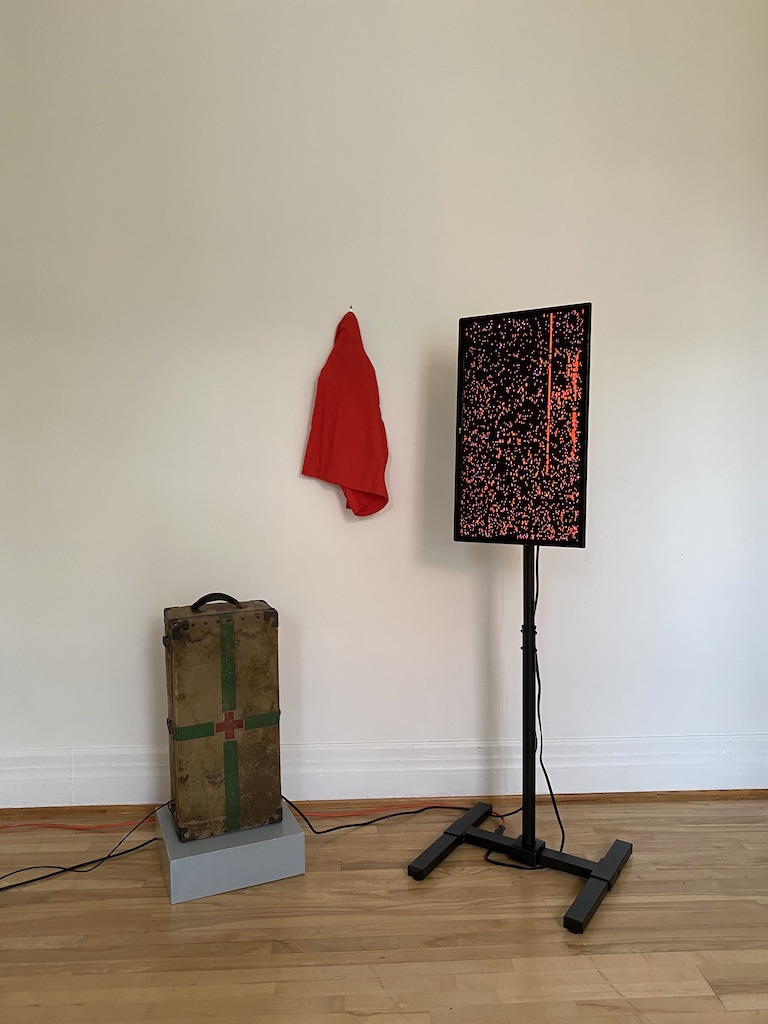
This work is materially comprised of a 1st World War trench medics case, a camera, monitor and red cloth, while the software incorporates Machine Learning in the imaging of the live video feed.
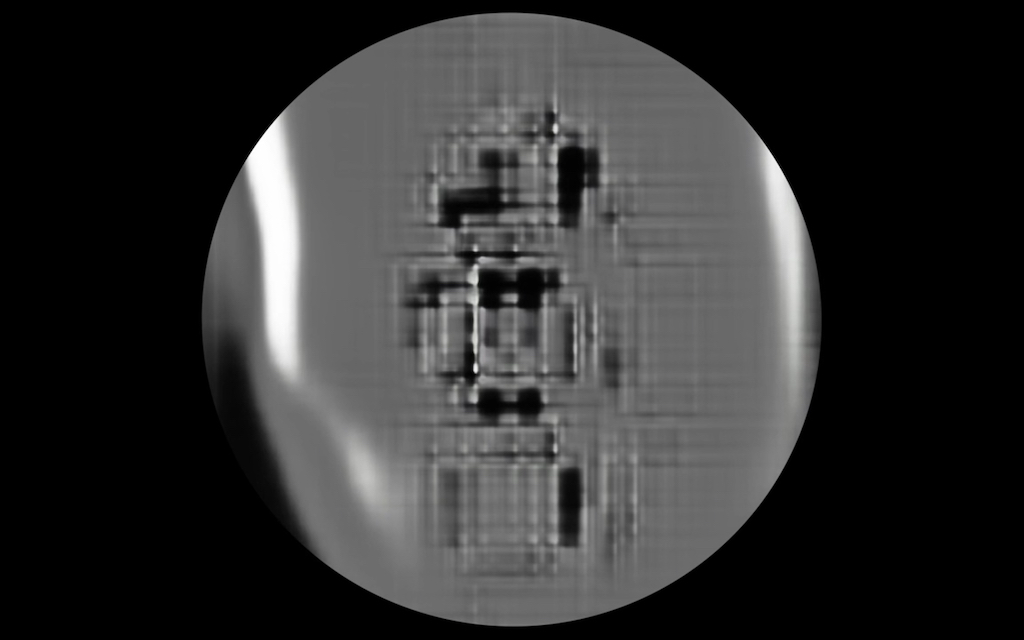
Concept(ion) is a video work made with a ML (Machine Learning) model, which has been trained on an image set of an electron microscope filming the moment of conception (an embryo being fertilized) and the act of an atom splitting and the beginning of a thermonuclear explosion.
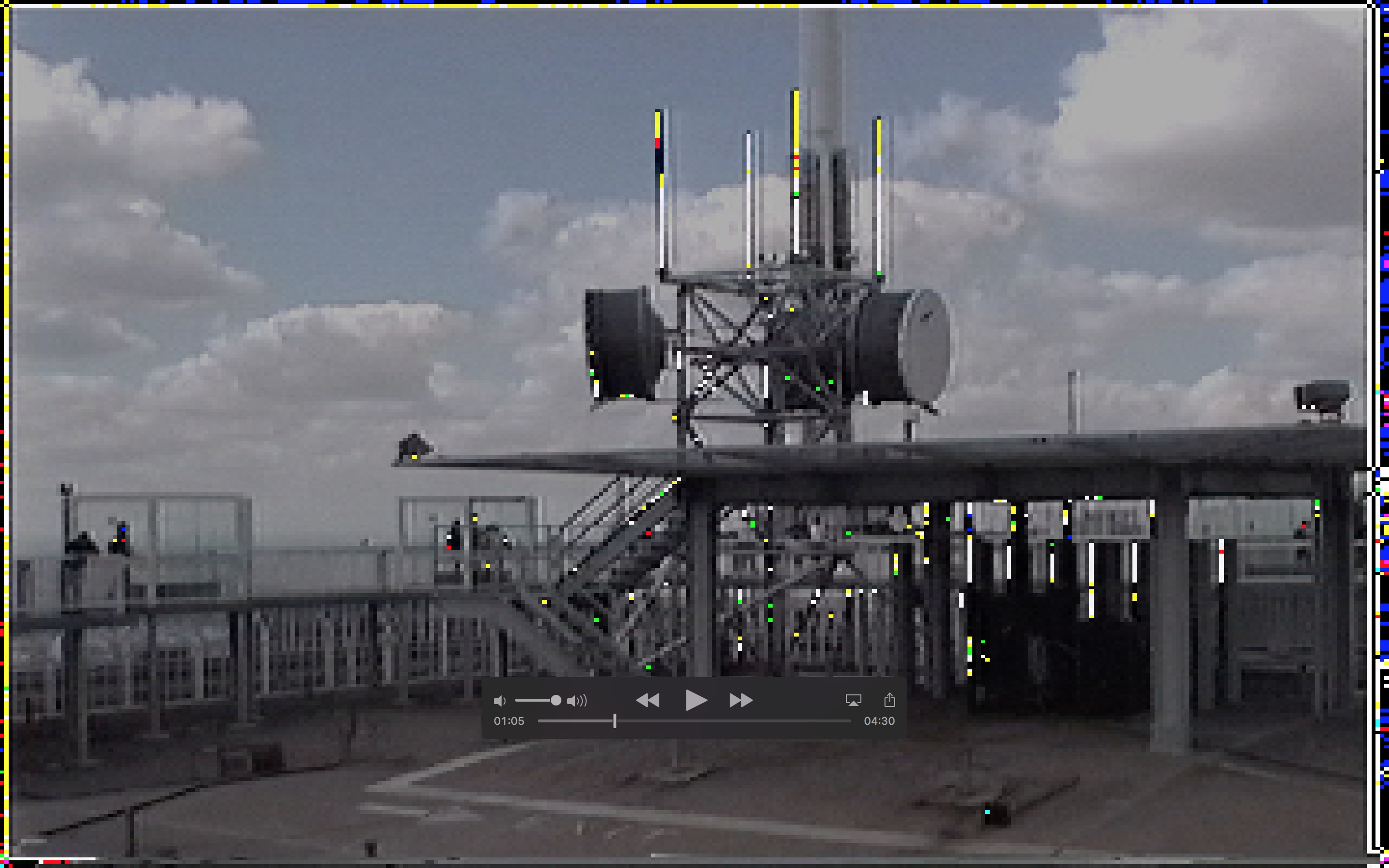
The bank of footage for this piece comes from two separate shoots; the first in the summer of 2000 and the second a week after/post 09.11.01.
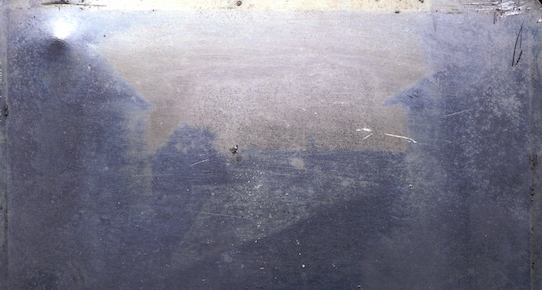
This work is composed of the first photograph and first audio recording. The first sound ever recorded, by Édouard-Léon Scott de Martinville, in 1860, is the initial seed for the system which then drives the visual exploration (from macro to micro) of "Point de vue du Gras", (seen above) the first photographic (heliographic) image, by Nicéphore Niépce in 1826. This is part two of a series of real-time video/filmic works, meant to be screened on monitors, in the manner of paintings or photographs...
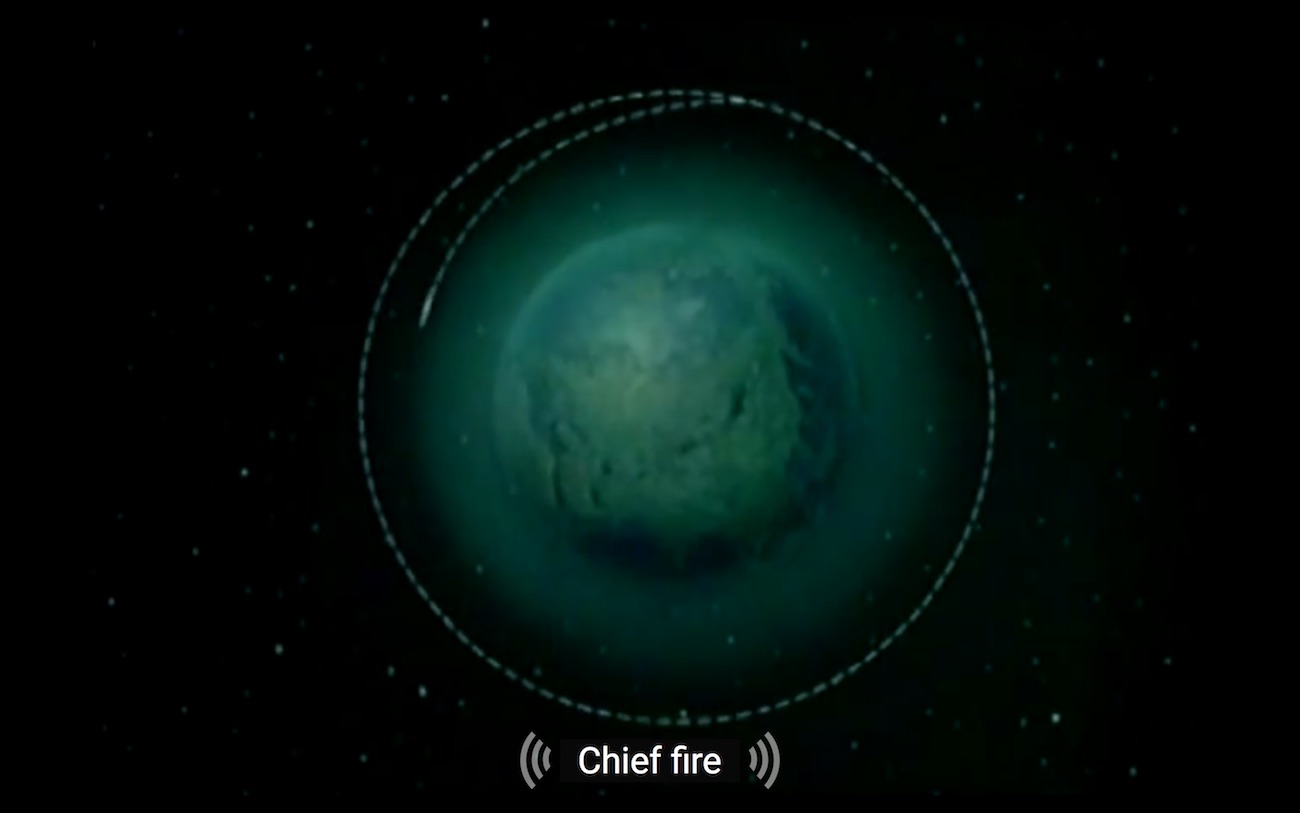
A series of prints made from screencaps of the auto-translate and captioning feature of Youtube, applied to the 1957 Soviet film directed by Pavel Klushantsev, Road to The Stars.
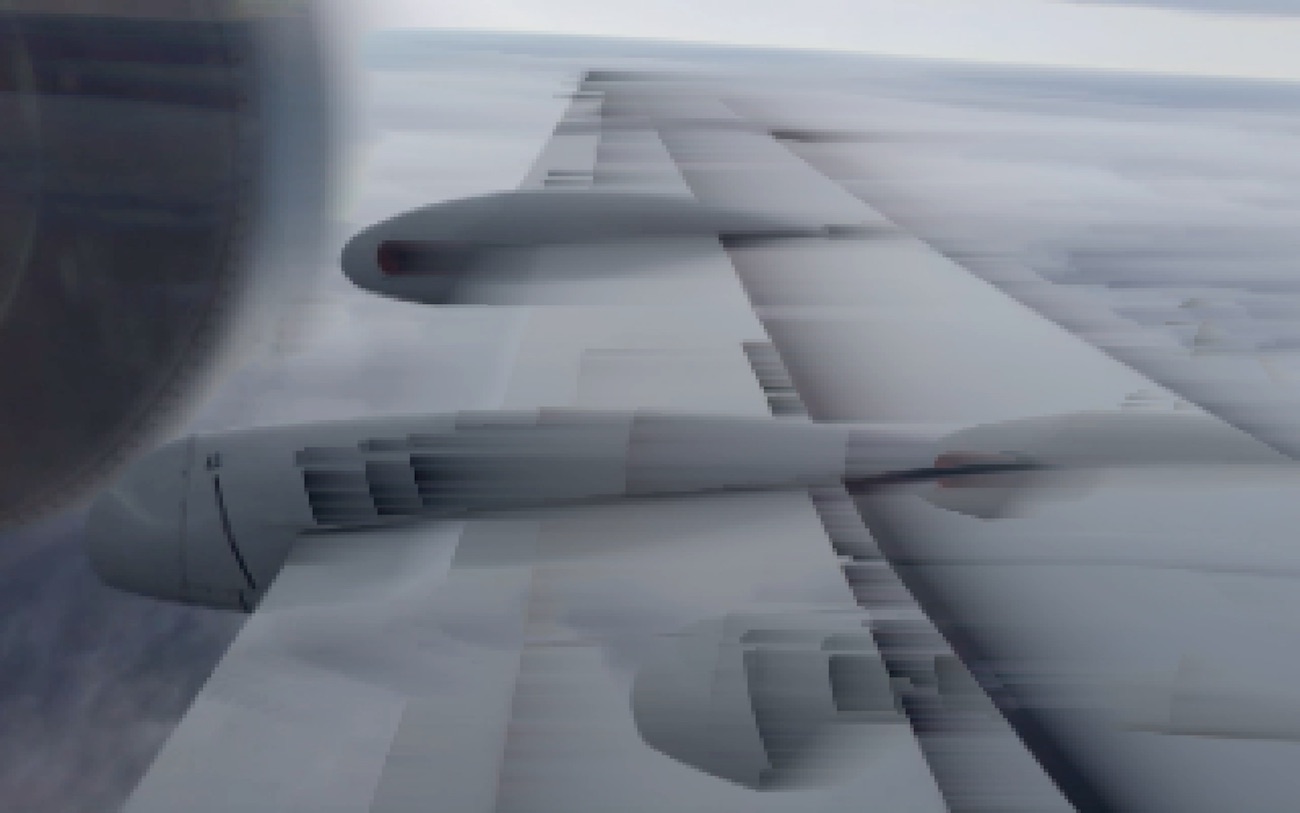
dresden.cuba.clouds is a generative video which incorporates imagery from the skies above the city of Dresden coupled with footage of clouded ice formations and video from the Museum of the Revolution in Havana.

This is a series of prints which have been altered from their initial state by processing them through custom software. The initial photographs were manipulated through a series of iterative and stochastic routines resulting in these computationally augmented images.
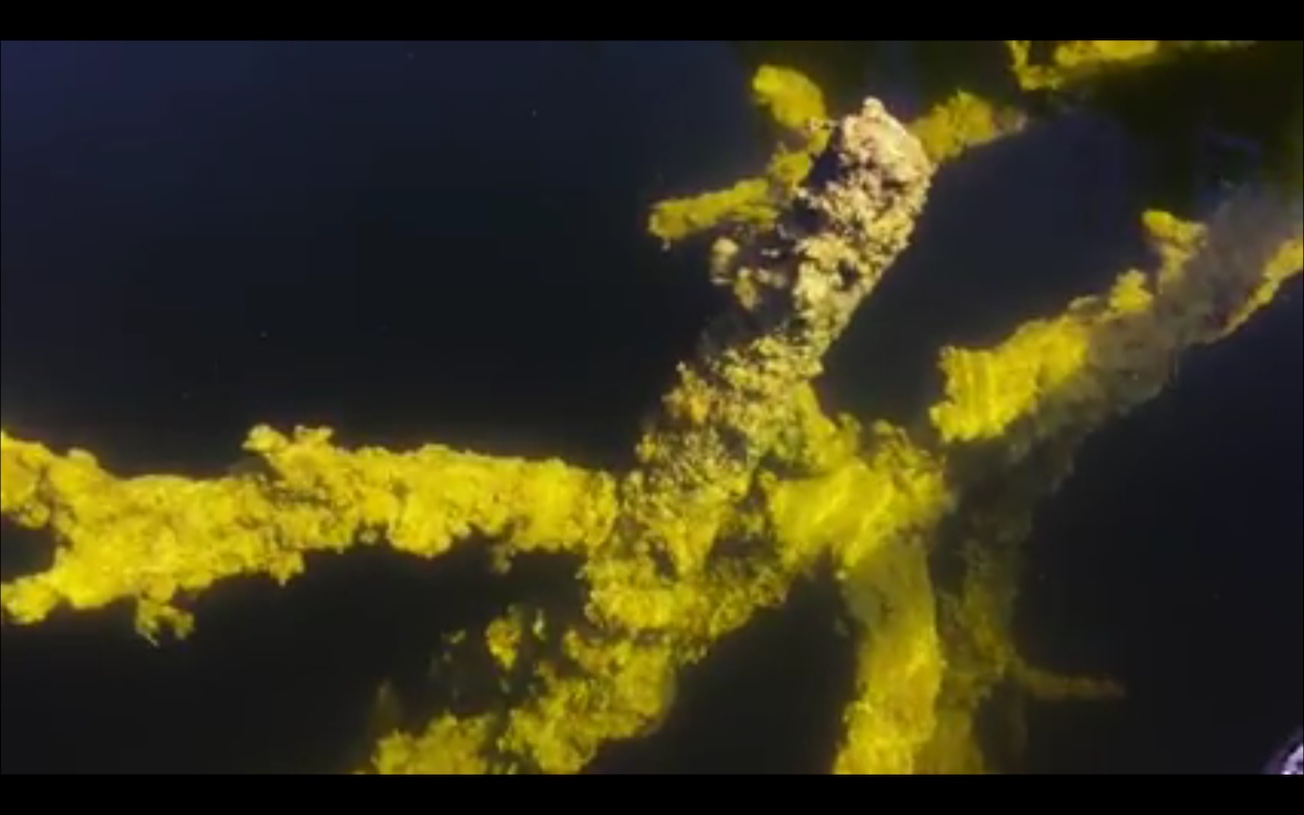
This is a series of videos I shot and then edited with Ian Ilavsky (Constellation Records) for the modern chamber ensemble Esmerine.
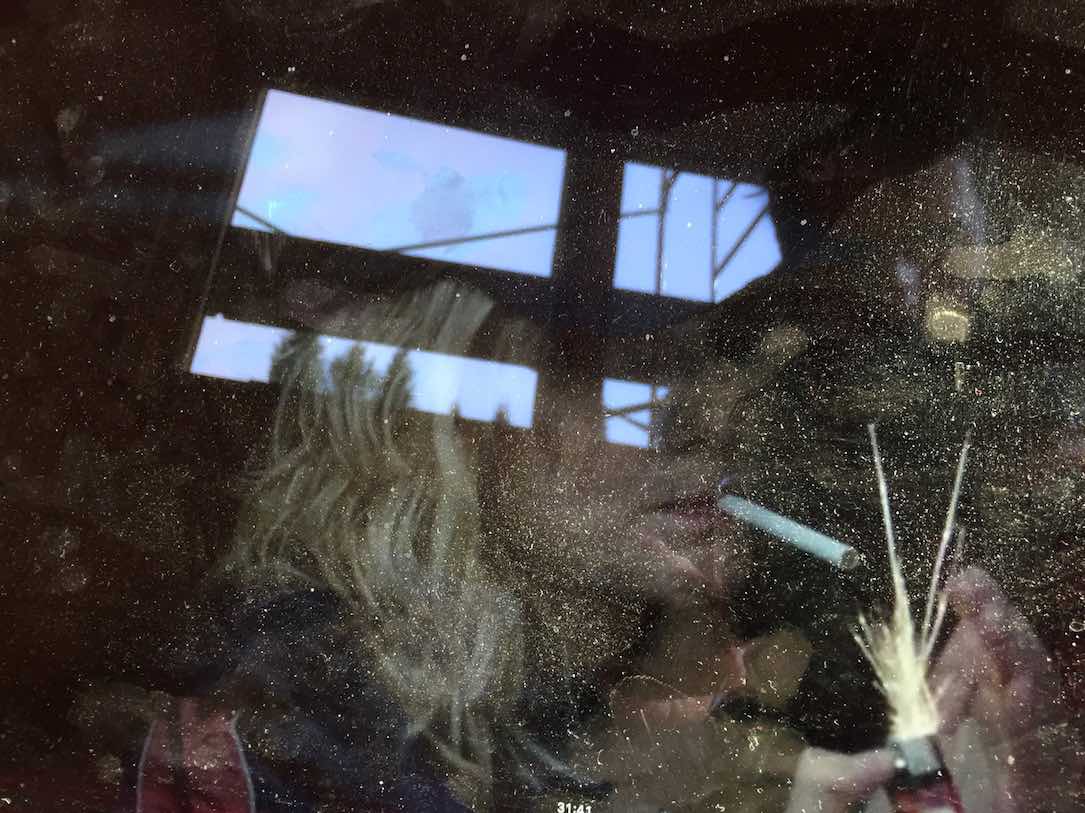
This series of five prints are images sourced from the television series "The Americans". Although they bear the traces of digital imaging and processing, there is no code here, only dust, light and reflection...
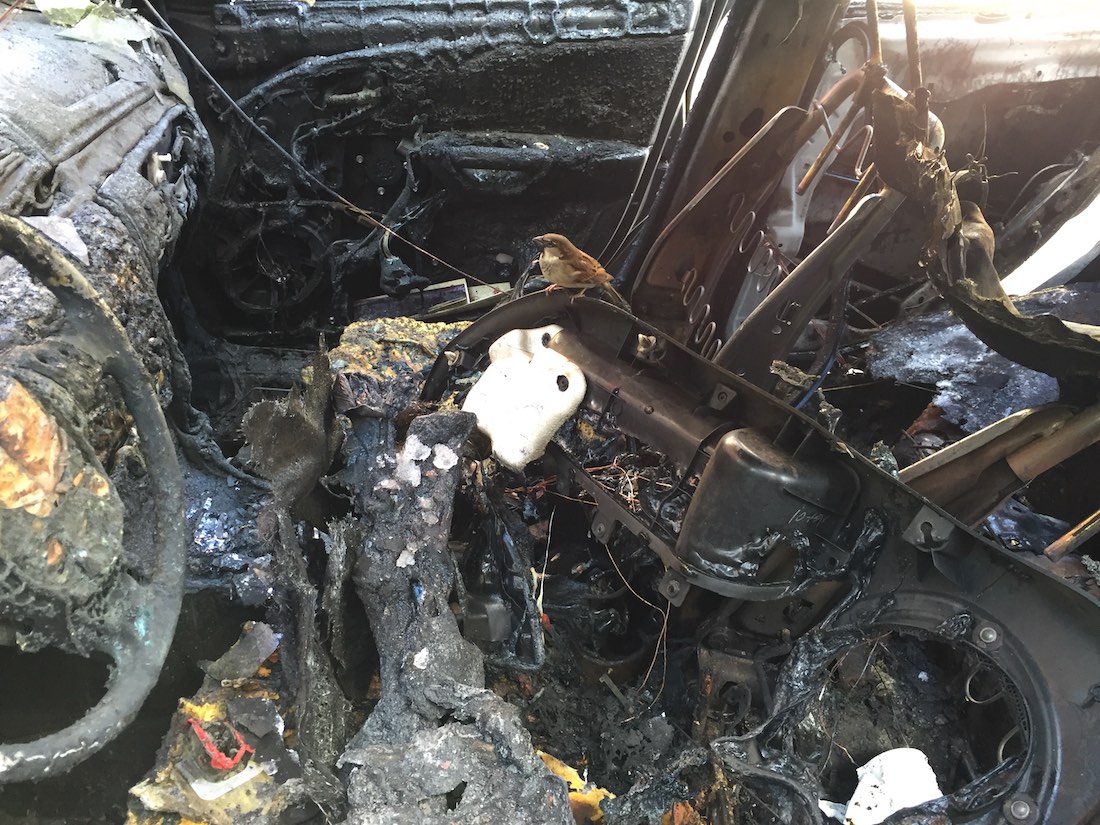
Ubi sunt (literally "where are... [they]") is a phrase taken from the Latin Ubi sunt qui ante nos fuerunt?, meaning "Where are those who were before us?" - wikipedia
This suite of photos (series of prints) was taken the morning following an arson attack on a car in my neighbourhood of Montréal.

This is a video I made for Sarah Neufeld's (Arcade Fire) song off of her debut solo album.

Heatsink is a two screen projection intended for large vertical indoor spaces and outdoor building facades. The system downloads (in real time) videos from youtube which are tagged with custom terms depending on the venue/theme. The ideal presentation uses the tag "protest".
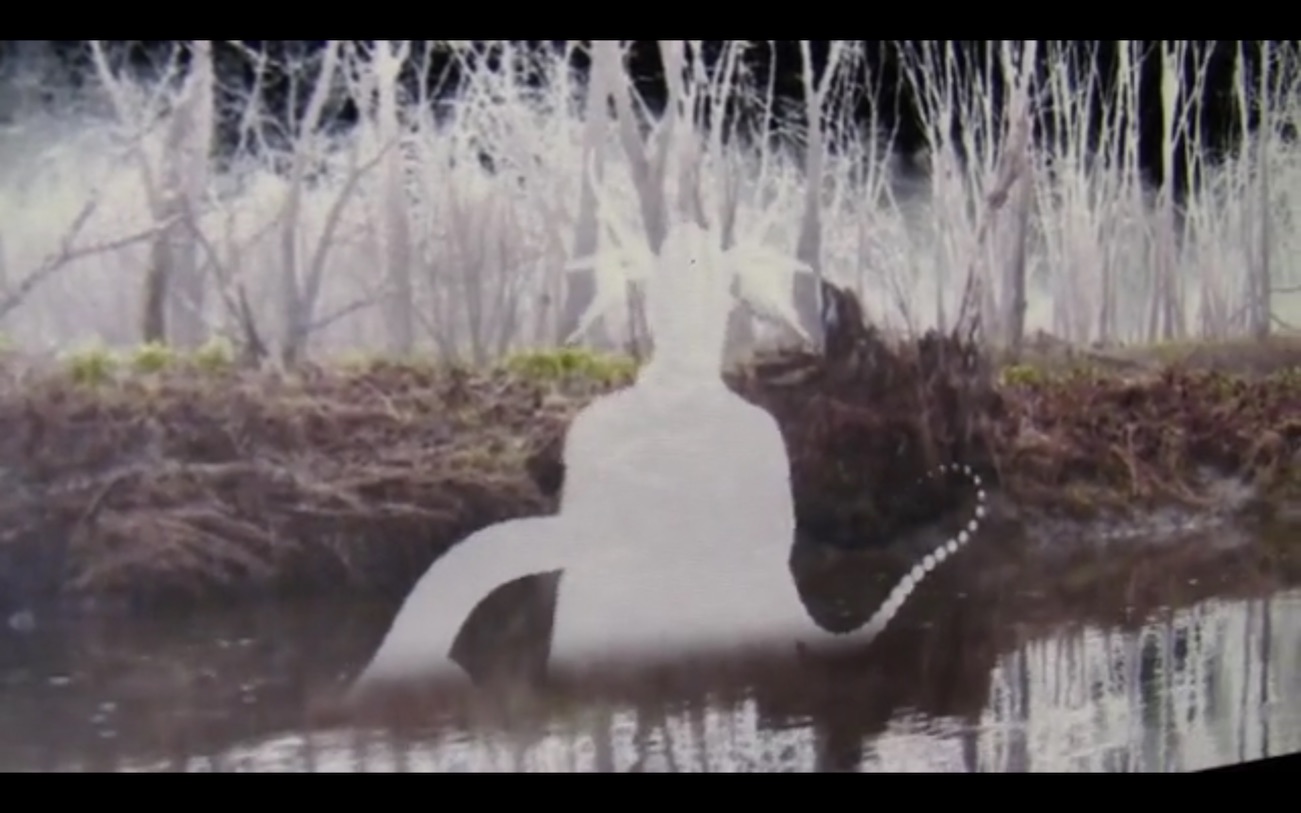
A kinect camera captures outlines of persons in the street and transports them into video of a forest scene where they acquire antlers and tails. After a brief real-time presence in this tableau the tracked figure disappears from the forest and enters the starfield in the window projection on the second floor...

Two weathered antennas mounted in a corner are equipped with responsive blue fluorescent lighting and act as EMF sensors in a sonification of the corners' electromagnetic signature . The corner of the room is also a 'puddle' of HSS audio which provides an intense and focused reactive sonic environment. A gentle and minimalist rumination on reception, enaction and embodiment.
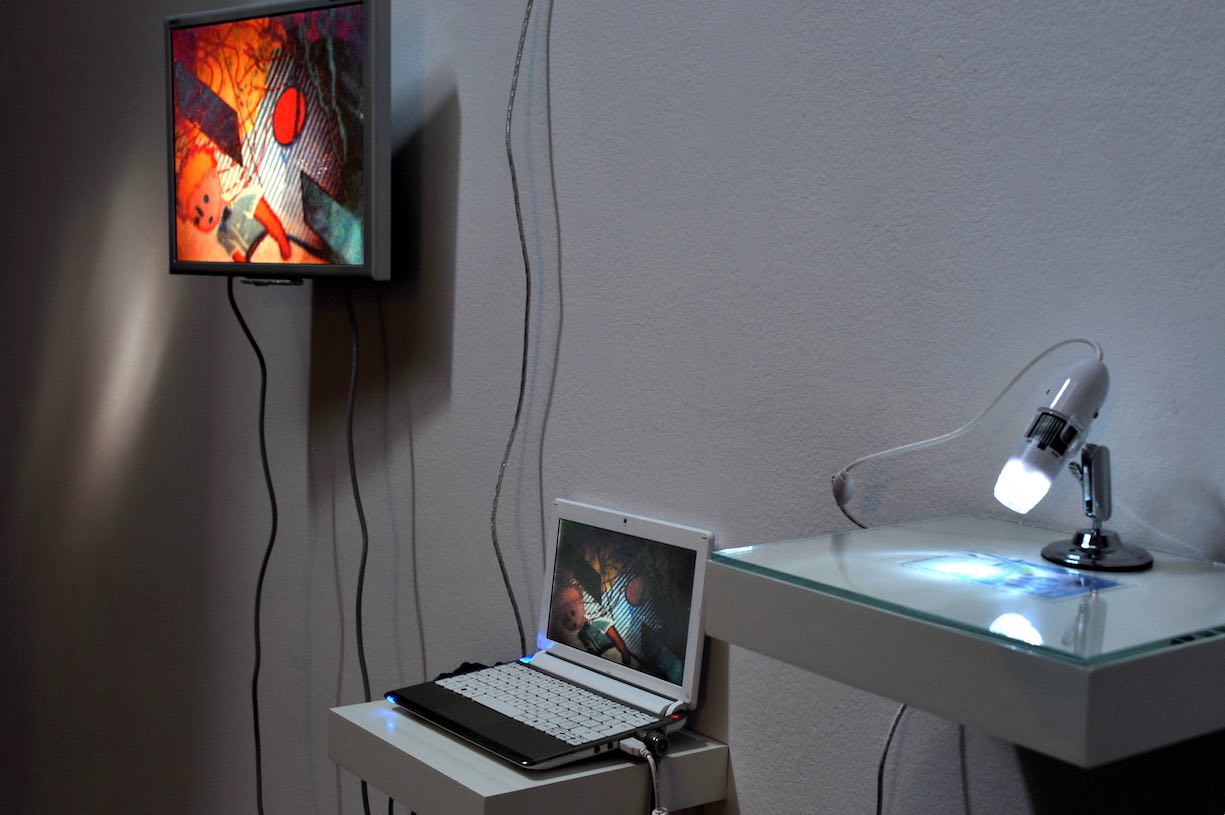
A microscope on a shelf and a telescope pointed out the window skywards provide the live video feeds for this all white work (gesturing towards a techno-scientific aesthetic), coming together in a single image on a wall mounted LCD screen. Viewers can manipulate the microscope with fetishistic proximity over a defunct 50 Franc note bearing the image of Antoine de Saint-Exupéry's "Le Petit Prince". The conflation of the micro and the macro in a single video image provides the backdrop for a critical reflection on money, politics and optics as well as speaking to a deeper, more nuanced articulation on desire.
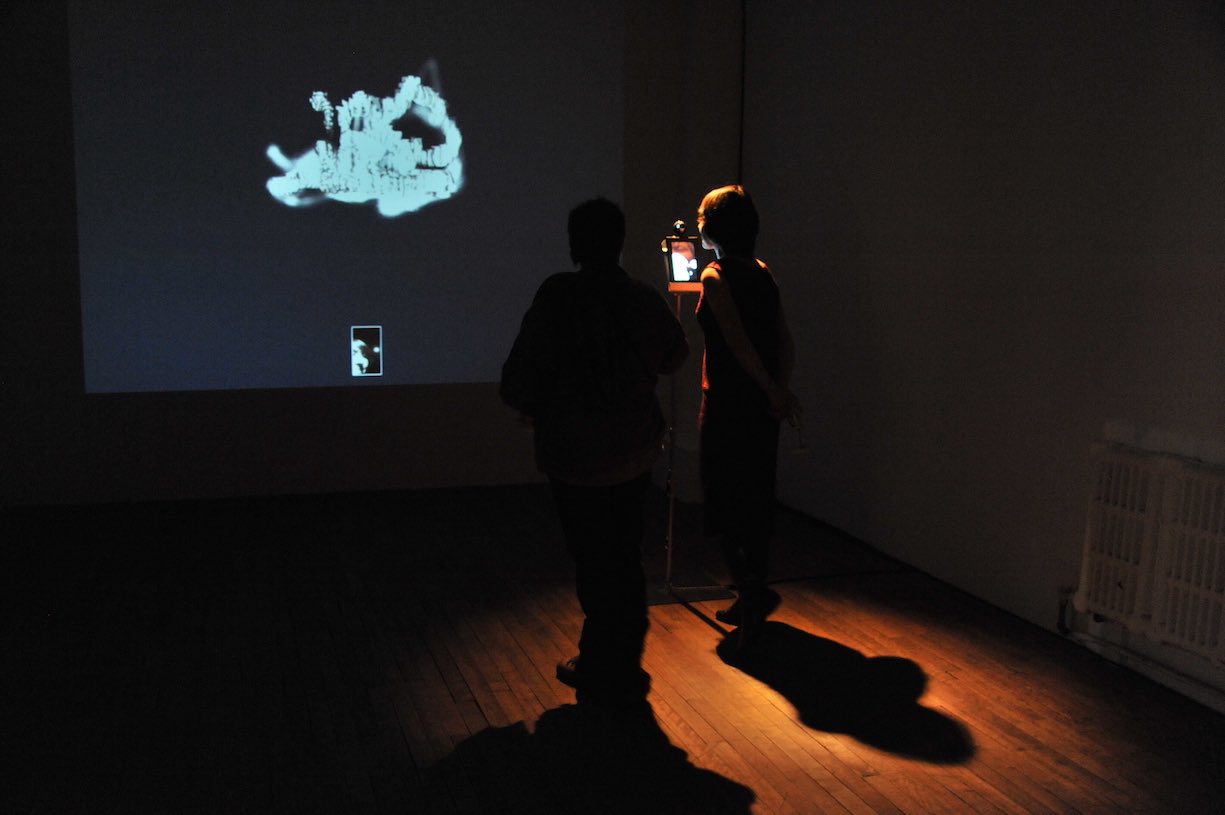
This work consists of a video camera, a small monitor and a projection of the live processed feed from the camera using custom software (built in openframeworks), which outlines the “light” emanating from the viewers face, “cuts” it out and sends this excised part of the image to a large projection of a single cloud-like form. The image of the cloud is of a churning mass of all of the light/luminance that the system has gathered from all of the viewers who have stood before the camera, keeping all of the light traces in memory (a local database) for a period of a single screening to several years, even ad infinitum...
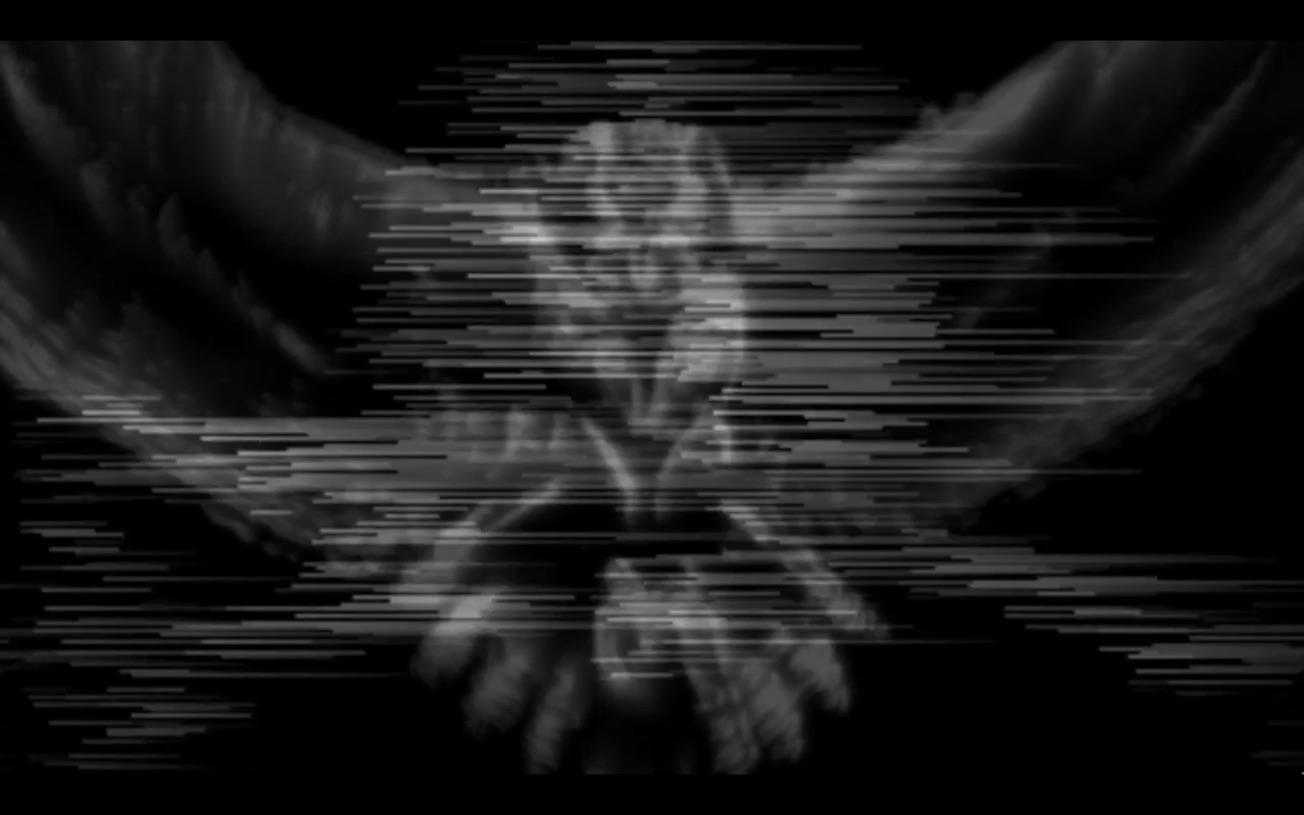
""Snow Day For Lhasa" features lyrics, guest lead vocal, and piano by Patrick Watson, who also tracked and mixed the song with Esmerine.

This work utilizes an antique heater (1917) and railway lineman lamp, a video of a handshake, an arduino microcontroller and 125 feet of black cable. Inscribed with the brands "Majestic" and "Wonder" respectively, the heater/lamp combination enact a primitive form of dialogue: one turns on the other, killing the power to itself, back and forth in an infinite loop of consumption.
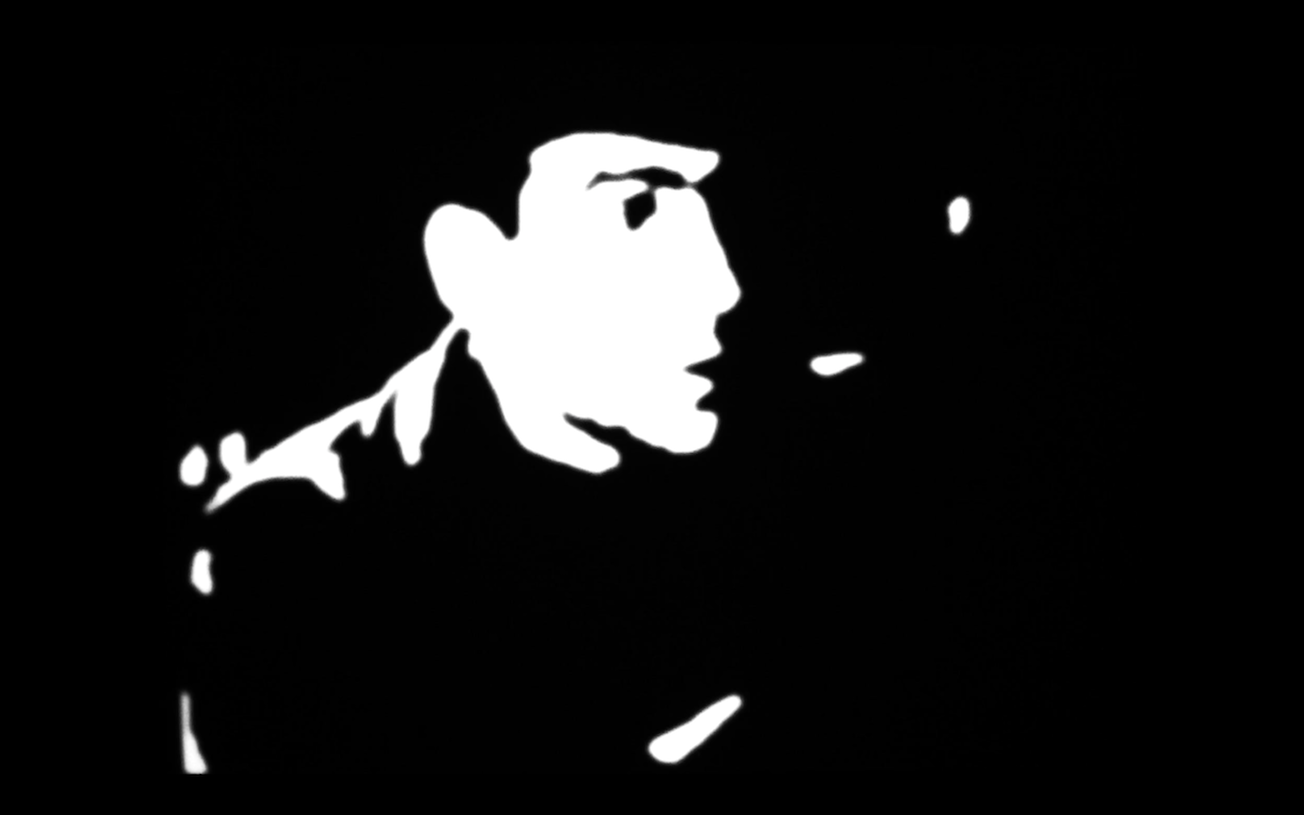
This work consists of a database of up to 200 "film noirs" spanning the decades of 1930-65. Depending on context the piece has flexible screening times ranging from a live scored performance of 35min to an unlimited cycling of days, weeks or months for exhibition/screening purposes. The system reads a film randomly from the database and extracts only the color black from the image in real time and presents it in inverse visibility against a letterboxed tableau.
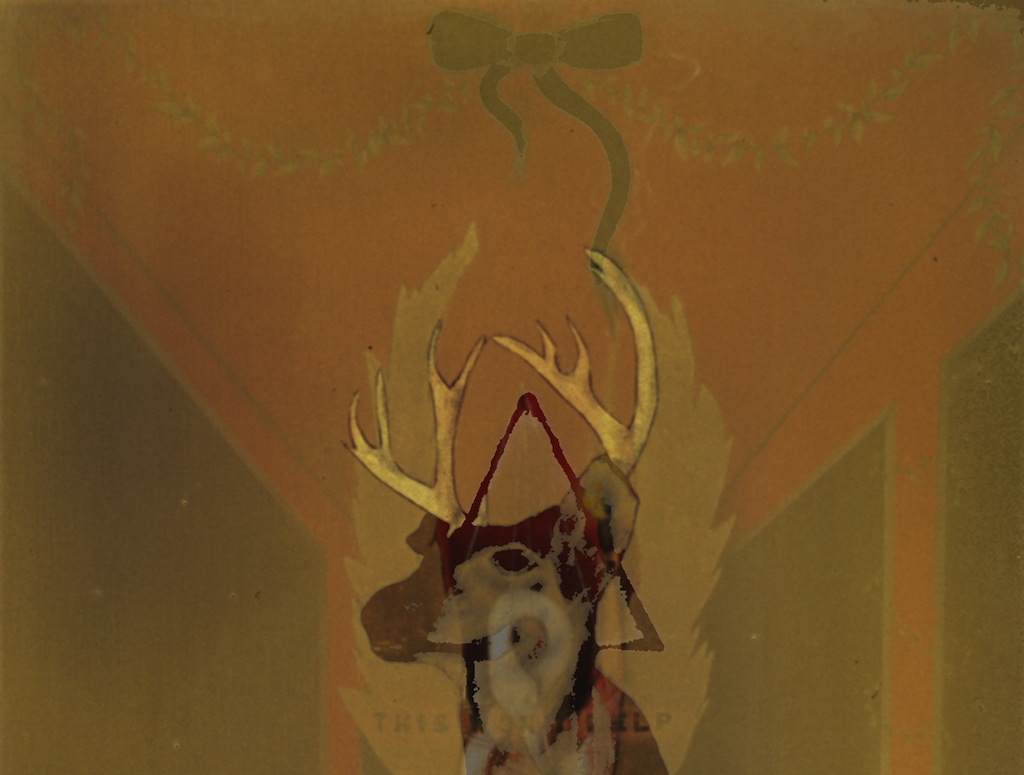
auto suggestion I is a screen based, real-time visualization of the processing of a database of paintings. The work incorporates the full text of Baudelaire's one surviving notebook “Journaux Intimes”, 65 hi-resolution scans of paintings that I made during the decade 1989-1999 (at which point I stopped making paintings), a large projection of the running system (or presented on a LCD screen) and an archive of eight large giclée prints made from the resulting output from the process.
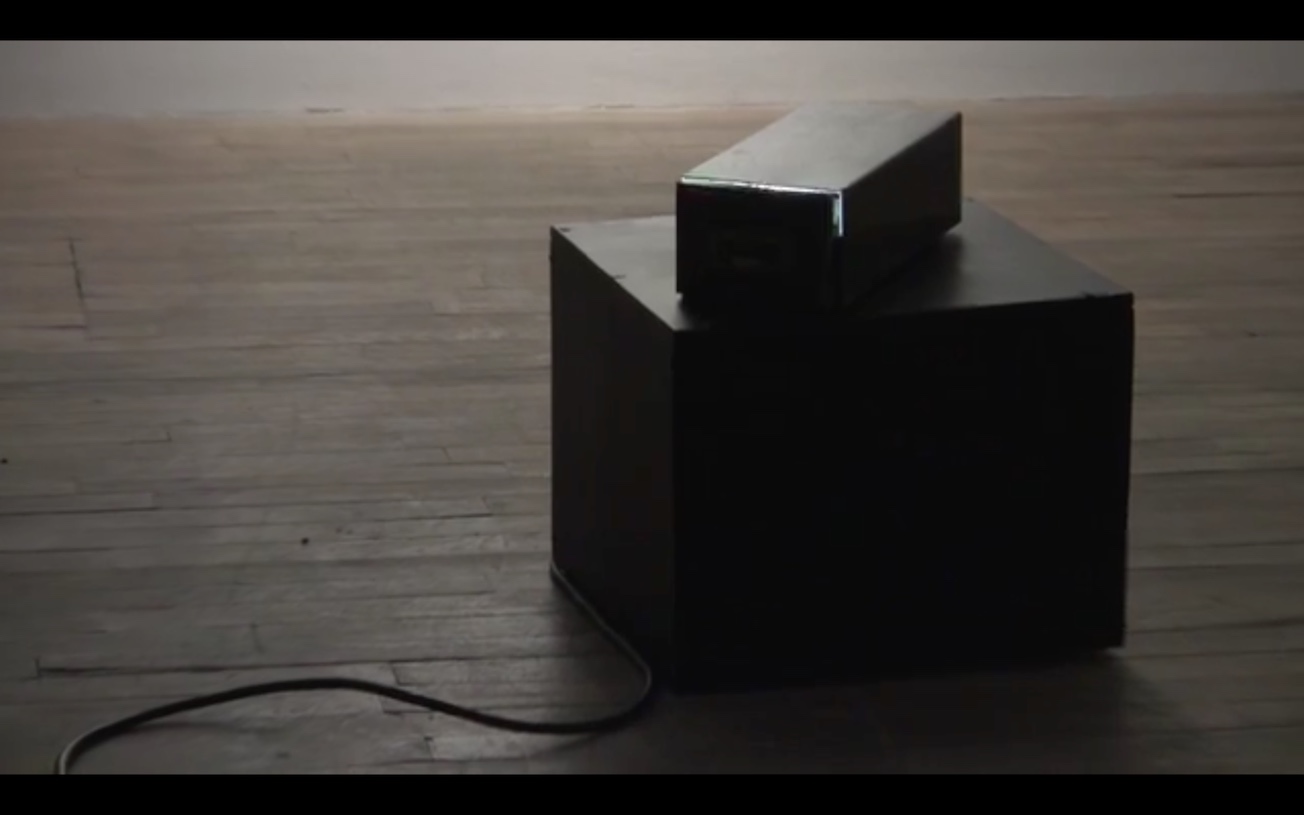
auto suggestion II is an antique metal filing cabinet of library card catalogue scale. Embedded within this object is a series of ultra white LED's and a custom circuit with an arduino microcontroller. These blindingly bright white lights signal in binary code any time a source word from a database of terms is found while searching through a large aggregate of world news rss feeds. The words used are "missing, disappeared, lost, absence..." and so on, all relating to the theme of missing persons, and the lights blink out the word found after the systems conversion of the adjective to its binary equivalent.
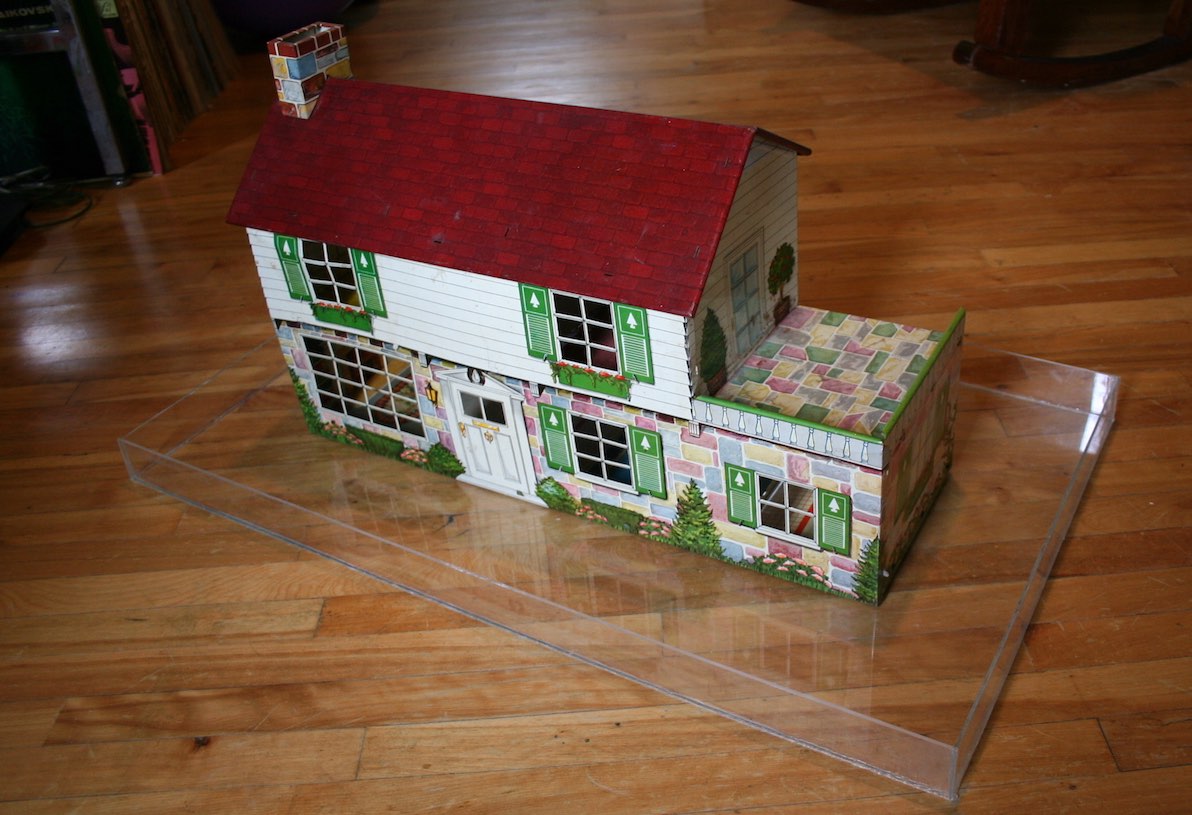
An antique metal toy house sits immersed in water inside a large and shallow plexiglass tray. Inside the house is a water pump which responds to a network of eight wireless sensor units distributed throughout the exhibiting venues entire building. These discrete yet sentient nodes monitor the minute changes in humidity of a given building’s interior.
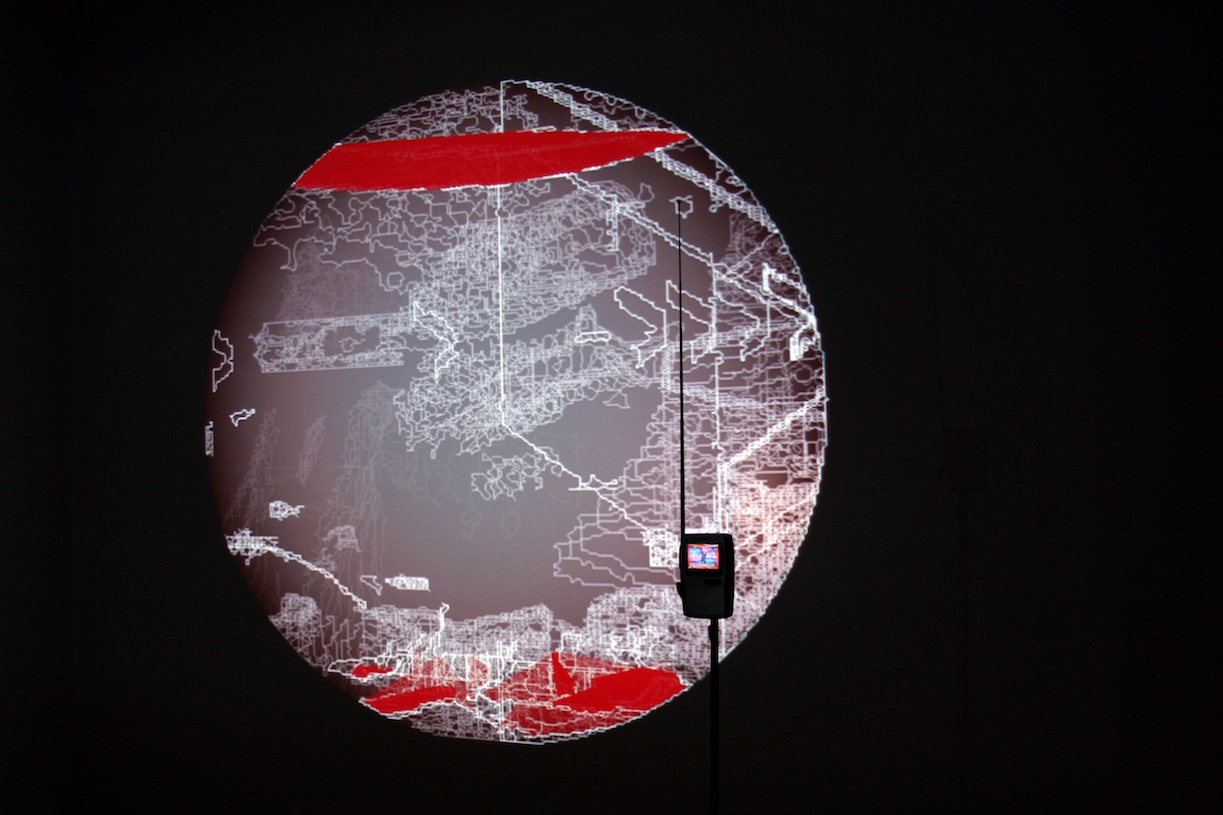
redTV is an installation incorporating a live TV signal, a small Television, custom software and a projected circular video image. The TV signal is fed into a laptop using a analog to digital video converter and is then accessed via the redTV application, using the OpenFrameWorks library for C++. The image is analyzed and any areas of red are then isolated and tracked in real-time, leaving behind a trail of image outlines which gradually, over the course of several minutes, fade away. In this manner a complex and dense environment of filigreed lines emerges and dies out, tracing and mapping an evolving history of the underlying visual mechanics and sight lines the cameraman/editor/producer consciously or unconsciously constructs.
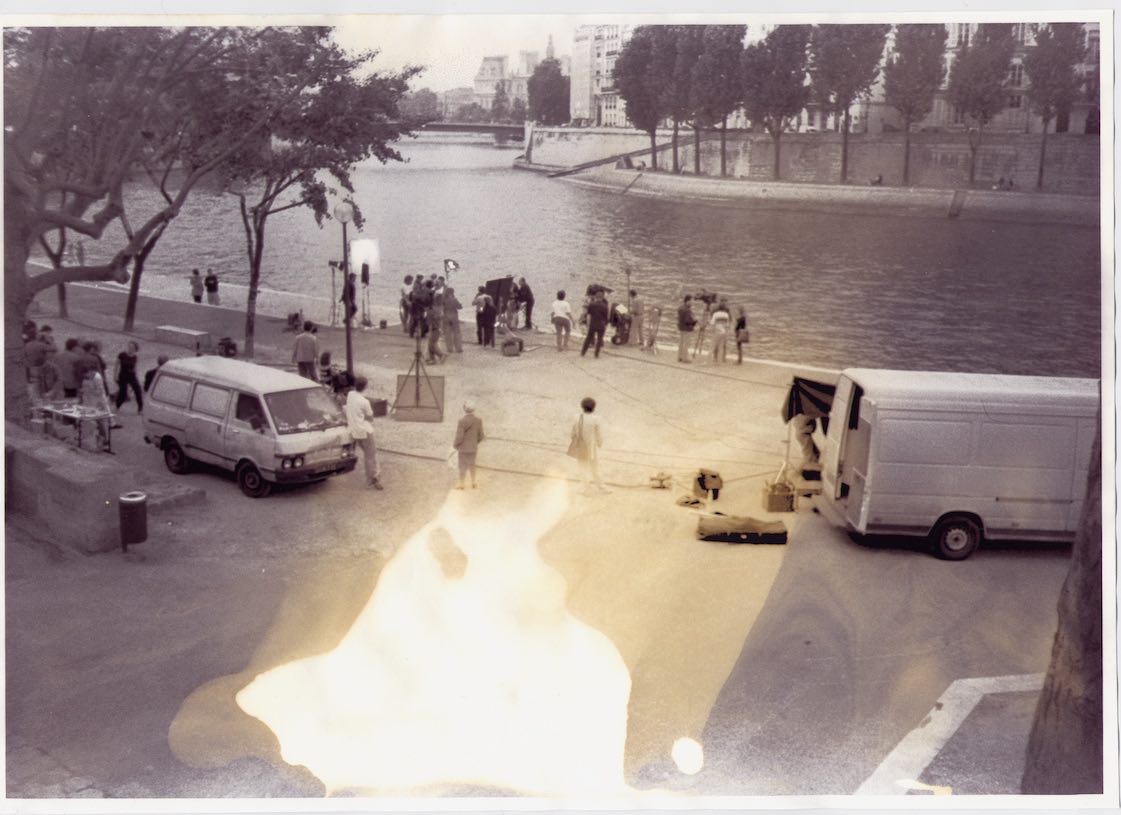
These works stem from a 2003 net.art project titled "Alt+Delete", and the doctored photos are the results of several screenings (including the Viper new media festival in Basel, Switzerland and le Musée du Québec) where anonymous viewers visited the site on the net and by clicking on one of two buttons in the interface, telerobotically intervened upon the physical image in my studio.

Ghost is a series of montage pieces, (in the classical sense), and are composed of photos that I have taken in a number of different locales around the world. The project is really a visualization of some of the elemental principles of the way images, when combined, create a “third meaning” in the Eisensteinian sense.
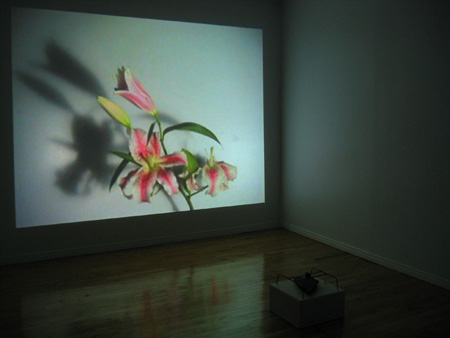
Volat hora per orbem ("The hours fly around in a circle")- Manilius (Manlius or Mallius, Marcus or Caius), from Astronomica the language of clocks is an installation which incorporates a time-lapse video projection of a lily and a small servo motor attached to a nail that scratches a circle into a piece of shale rock.

This piece is comprised of an antique Priest’s portable last-rites kit from 1912 and a Schumann Resonator...
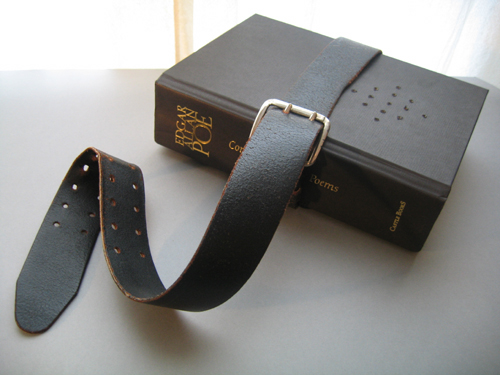
...incorporates an emf sensor and speaker inside a hollowed out copy of Poe's complete works. When switched on the book becomes a mobile emf detector and renders audible the invisible flow of electromagnetic currents in the environment.
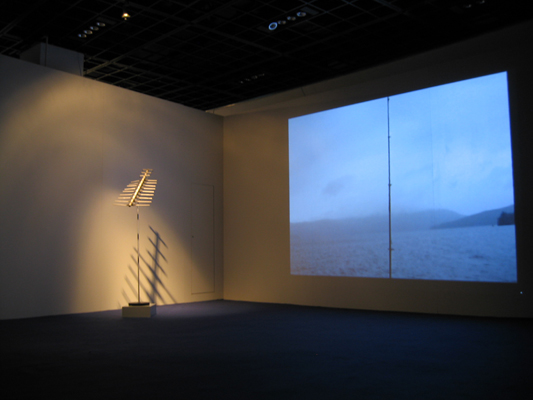
This work, another in a series of reactive, cinematic projects, is composed of an ELF sensor, antenna and large projection of a video database of water i have filmed over 15 years in different countries of the world.

...is a wi-fi enabled antique wooden carrying case equipped with a highly sensitive humidity/temperature sensor. This sentient object, embedded with unknown histories, sits omnisciently in a space, registering the slightest variation in ambient weather patterns. The variable climactic conditions which the suitcase registers are controlling the filmic image of a train, seen from the last car, a kind of homage to the early cinematic obsession with trains and mechanized travel.
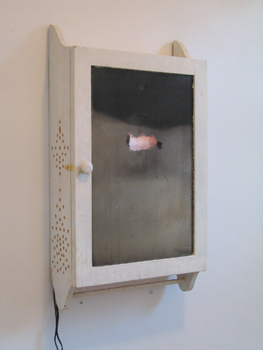
this work consists of a dessicated old cabinet, webcam, LCD monitor and TX-1 mini PC, running PD for the video/audio modulation.
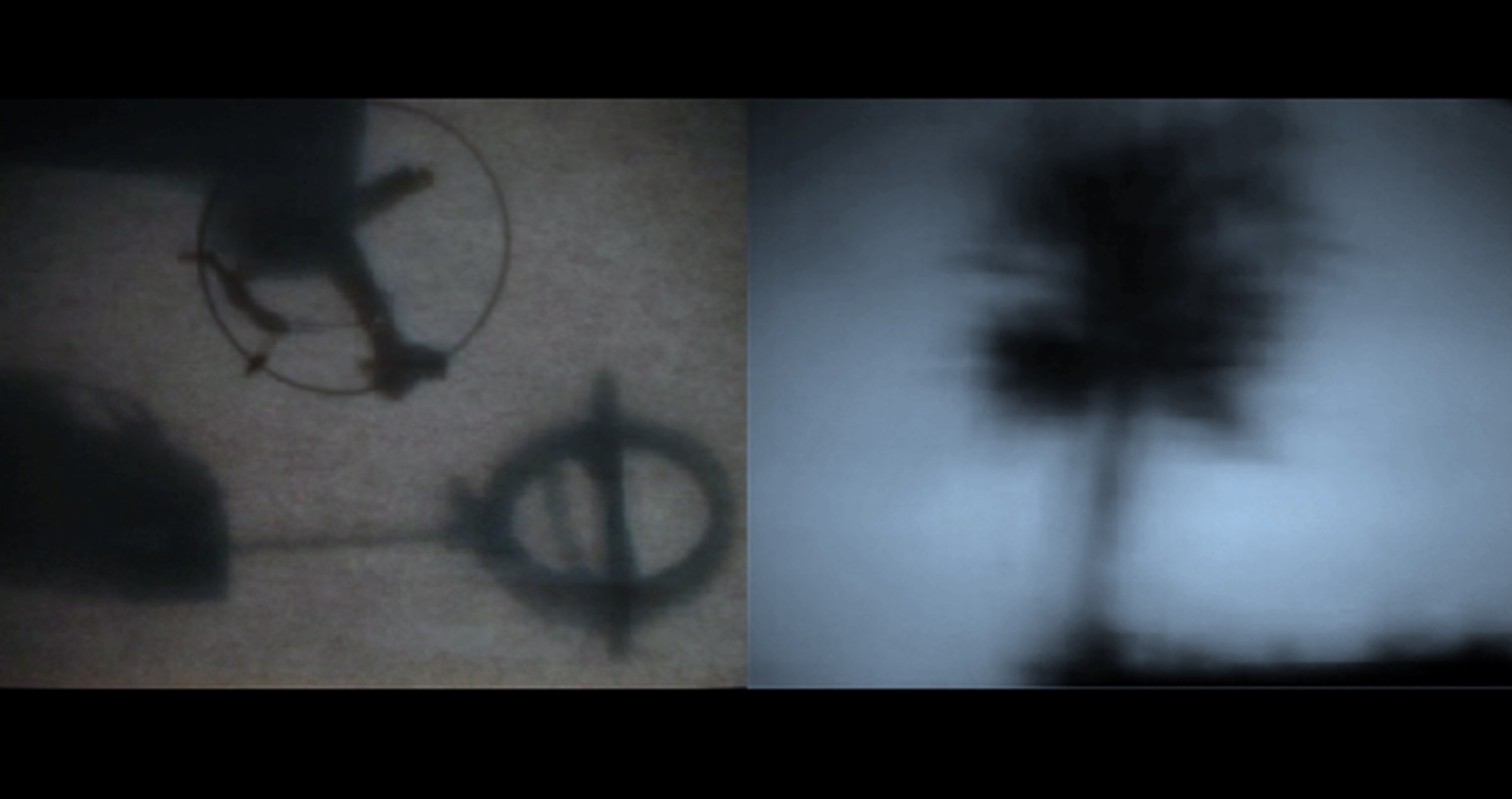
Shadowplay is a collaborative Telerobotic project with Alan Dunning (Einstein's Brain Project). This project consists of two seperate robotic armatures which reside in Calgary (Canada) and Montréal respectively. These autonomous agents are networked together via max/msp and speak to one another through the Net. The robotic events are backlit and filmed as shadows behind a white screen. The constructions are causal as well, each influencing something else such as the agitation of a plant (in Dunning's case) or the manipulation of photographs (Todd's machine).
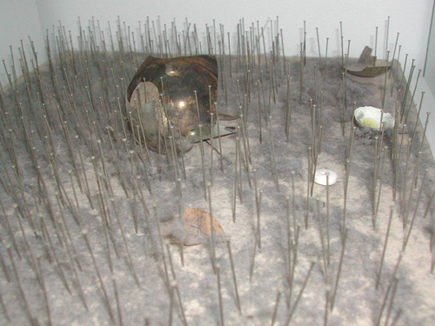
...(“goosebumps” in English) is a telerobotic work which incorporates a book interface covered with a grid of pins to trap dust and provide a surface for sonic manipulation. The book is played by dragging a tiny microphone attached to a lock of my deceased fathers hair (DNA) through the pins and dust. The hair is close mic’d at the point of contact and generates a minimalist soundscape which is created by manipulating a small robotic mechanism from the website interface. The video image is a live feed of the book/pin/dust/hair construction and the interaction takes place in real time.

...is a boxed/framed construction which houses 5 leaves taken from a 3rd century Zen temple in Nagoya, Japan. The environment contains a mini web server with custom electronics, a motor controller and a small fan. Viewers literally visit the box itself and by accessing the internal website and toggling a button one controls the activity of the fan which in turn gently blows the leaves with the spectral breeze of the net. heliosphere is the name for solar wind...

...is a telematic/robotic boxed construction which comes to life as the result of anonymous users actions. The project is only available for interaction when being exhibited (which is rarely), hence this site serves as a source of archival documentation. The assemblage contains various objects that are from varied sources, pointing to the fetishistic nature of collecting/collections as well as the way in which one's relationship to objects can be seen as a function of mnemonics, simultaneously nostalgic and critical about histories embodied as physical signs...

A weathered, transparent briefcase holds a mass of flowers which, after a couple of days of decay, begin to breakdown in the hothouse of the casing and elevate the temperature and condensation of the interior. There is a temperature sensor inside the briefcase which at a certain point is switched when the heat is peaking, in turn controlling a large projection of hands which after hovering in space and waiting "come alive" as a result of the flowers demise/transubstantiation.

...is (when exhibited) a live stream from my studio in Montréal of a glass tray containing a photograph immersed in water. The left side of the interface holds two images of, respectively, the original manuscript for Baudelaire's "Spleen de Paris" and Proust's "A la Recherche de la Temps Perdue". By clicking on the two gold rings (buttons below the video image) you are directly controlling a small robotic armature which shakes and collides two small glass vials that hover above the tray which contain bleach in one and blue dye in the other.
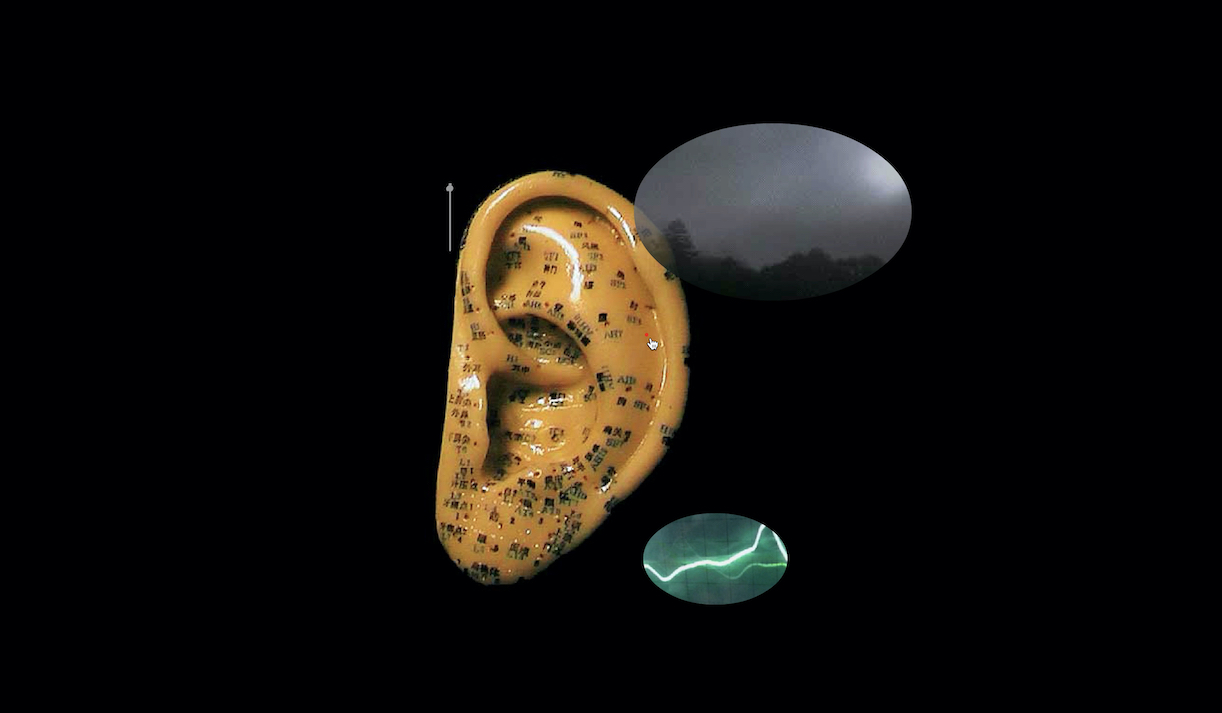
Hearing Loss was an early net.art work which employed a close-up image of an acupuncture model as the interface for an exploration of audio and video elements. The viewer was invited to grab an acupuncture needle to use as a trigger for a large database of media objects. The user was able to remix and collage an environment akin to a musical or VJ instrument. As featured in Timothy Murray's book "Technics Improvised: Activating Touch in Global Media Art" (2022)